
By DANA TIMS/YachatsNews.com
Roy Lowe wasn’t sure what to expect as the state-chartered fishing boat he was aboard recently hovered over a rocky reef 160 feet below the surface off Cape Perpetua just south of Yachats.
Lowe and nine other volunteers, all receiving specific instructions from Oregon Department of Fish and Wildlife staff on the boat, were participants in the first “hook-and-line survey” since the pandemic shut down similar research efforts in 2019. Their goal was to catch, measure and release as many bottom-dwelling rockfish as possible to help assess health and overall numbers.
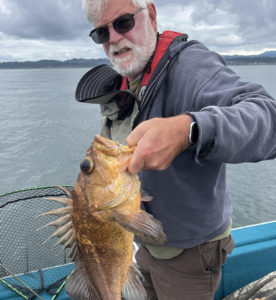
The first indications of a robust population came almost as soon as the first lures hit the water.
“The minute we dropped in, boom,” said Lowe, a retired U.S. Fish and Wildlife manager who lives in Waldport. “We were catching fish immediately.”
Four hours of fishing, conducted in specific research grids over the reef below, hooked some 266 rockfish, which include colorfully named varieties such as Canary, Yellowtail, Copper, Quillback and Yelloweye.
The point of the exercise is to help build upon the substantial body of research that already exists for the Cape Perpetua Marine Reserve, said Lindsay Aylesworth, interim program leader for the Newport-based Oregon Marine Reserves program.
“From an oceanographic standpoint, the Cape Perpetua reserve is a really dynamic area,” she said. “And each new piece of research gives us new insights into near-shore management of our coastal areas.”
Cape Perpetua’s One-Pager
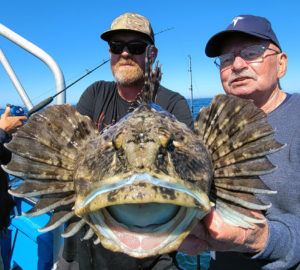
Cape Perpetua is one of five marine reserve areas established by the state in 2012. It got some special attention recently, when it was the focus of what state officials called a “One-Pager.” The online document provided a snapshot summary of what makes this reserve unique among the rest.
For starters, the habitat at Cape Perpetua has deep, isolated reefs unlike any of Oregon’s other marine reserve sites. That habitat perfectly suits rockfish, which is why Lowe and other volunteers were helping with the recently population count.
The reserve has also provided important information to track and understand nearshore low oxygen events and ocean acidification – two emerging ocean issues that are affecting the waters off the Oregon coast.
The fact that so many rockfish were hauled in during the recent survey told Aylesworth that ocean oxygen levels were high, which is something that fish biologists say is conducive to healthier populations.
“Fish tend to move away from areas with low oxygen or hunker down and aren’t very active,” she said. “So it’s exciting to know we aren’t in a period of low oxygen.”
Cape Perpetua Marine Reserve has also played a key role in tracking first the dramatic decline of Ochre sea stars beginning around 2014, and then their equally robust return since 2020.
Scientists believe the so-called wasting disease that originally decimated sea stars living in the reserve’s rocky intertidal area was linked to warming ocean temperatures. Recently rising sea star numbers has researchers hoping that ocean temperatures could be cooling back down to levels seen a decade or so ago.
“Even before Cape Perpetua became a designated marine reserve,” Aylesworth said, “it was a place where researchers and scientists were conducting long-term monitoring in the habitat there. It’s taught us all a lot about what’s happening in our coastal waters.”
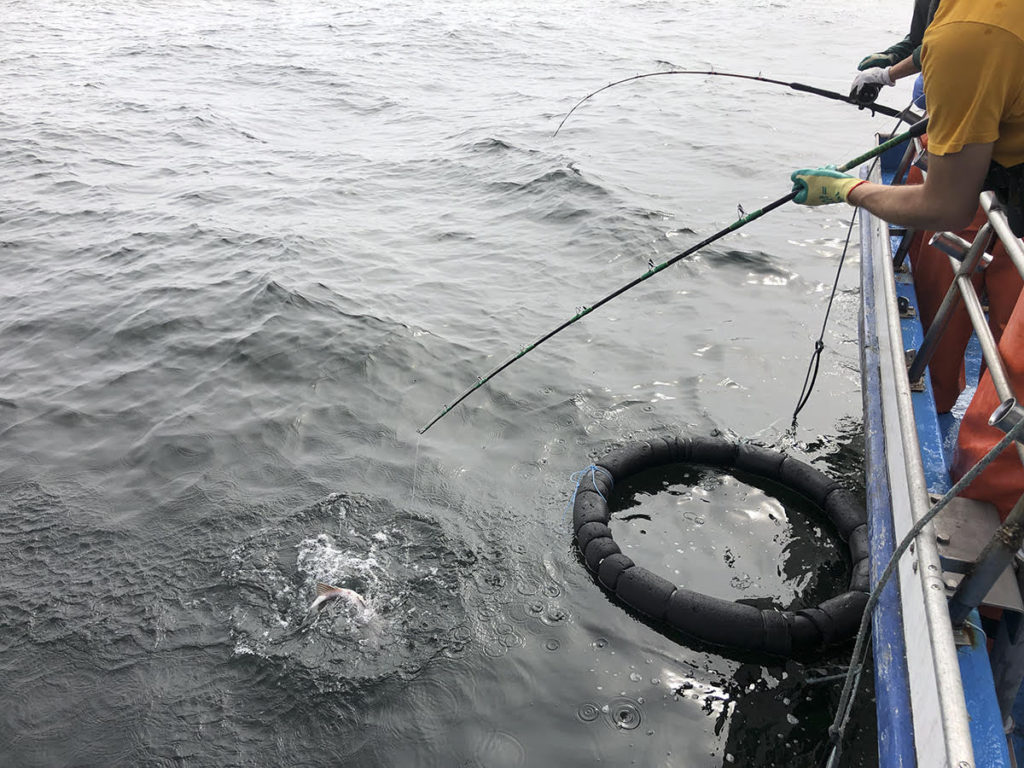
A good day for fishing
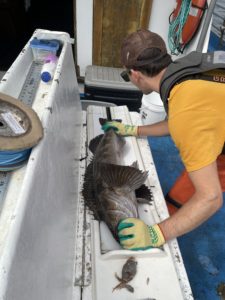
Back on board the fishing charter, participating volunteers had their hands full. Lowe, an avid photographer who is heading to South America soon to capture images of jaguars feasting on alligator-like cayman, had almost no time to focus on anything but dropping his lure into the water and hauling rockfish to the surface.
There, they were weighed, measured and, if possible, categorized by sex. Speed was of the essence, since rockfish mortality soars the longer they are out of water. A holding pen over the side of the boat helped ensure their safety.
Getting the fish back to their deep-water reef was equally as challenging.
Many, after all, were already affected by barotrauma – a term describing what happens when the gas in the swim bladder expands as a fish is brought to the surface. Signs of barotrauma include a swollen body, bulging eyes or the stomach or esophagus protruding from the mouth.
To ensure that the rockfish got back down to their preferred depths as quickly as possible, volunteers and crew attached descending devices to the fish. The devices, which have been shown to be at least 90 percent effective at ensuring survivability, use weights to drop the fish quickly down through the water column toward the bottom. They then open automatically at the desired level, freeing the fish to swim away.
“I’ve done a lot of fishing over the years, but this was just a special time to be out on that boat,” Lowe said. “It was a really special experience.”
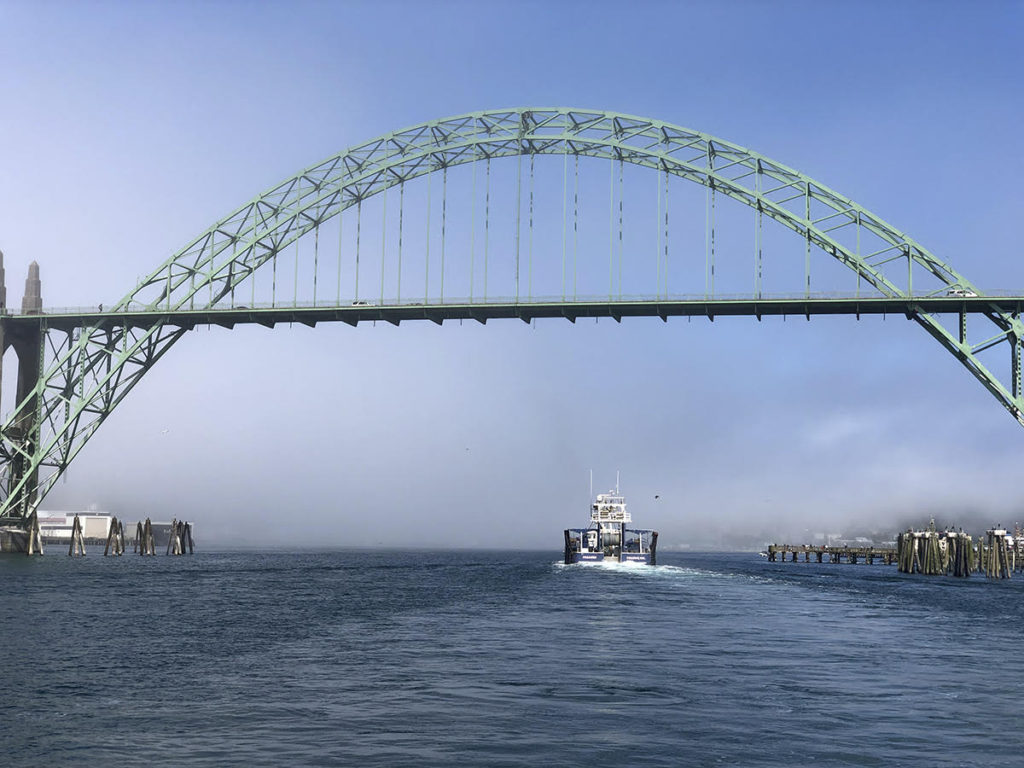
Want to go fishing?
ODFW personnel are always looking for experienced marine anglers wanting to volunteer for its Marine Reserve hook-and-line surveys. For more information, contact Ryan Fields at Ryan.T.Fields@odfw.oregon.gov
- Dana Tims is an Oregon freelance writer who contributes regularly to YachatsNews.com. He can be reached at DanaTims24@gmail.com


